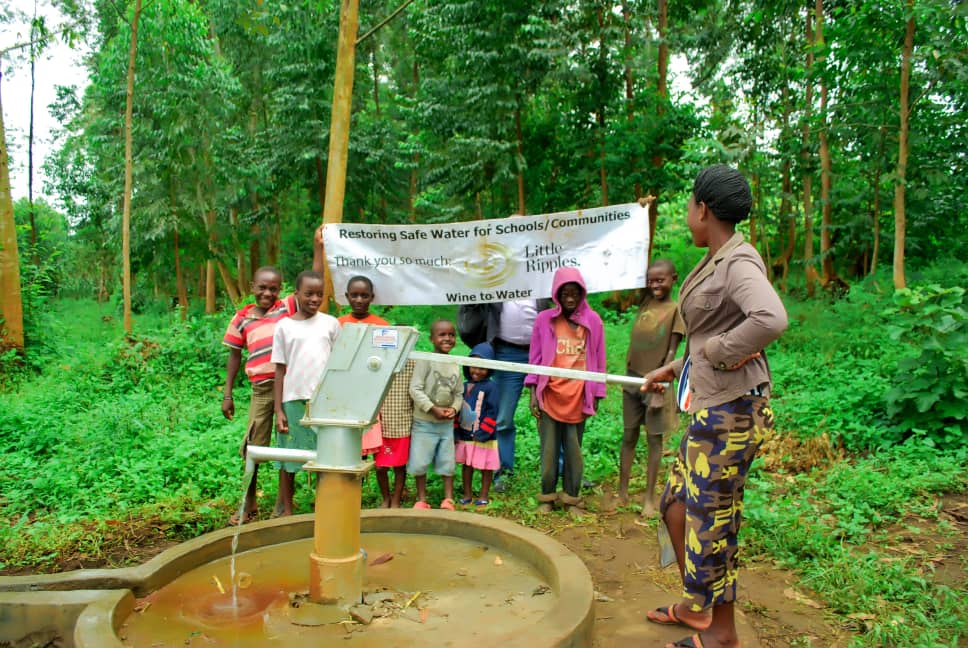Water Wells, & COVID-19: A Recipe for Disaster
Water, the basis of all human life, is a particularly precious resource for those communities spread all throughout sub-saharan Africa.
In 2020, however, it became even more scarce, with many of the life-giving water wells in the region failing to be properly maintained thanks to the COVID-19 pandemic and the chaos that it continues to bring.
Add this to the fact that one out of every three wells in the region is in non-working order and you have the recipe for a humanitarian disaster.
Whilst schools were slowly permitted to reopen last year, government restrictions mandated that they must be within 500 metres of a source of running water.
This prevented many of the children living in the Ibanda District, however, from receiving the education that they wanted as many of the wells in the area had stopped working.
Rebuilding these wells as quickly as possible, therefore, became our number one priority.
By the Numbers

Little Ripples and the "Wine to Water" initiative was able to help guarantee the continued education and general wellbeing of over 6000 people.
For a complete breakdown of the results, here’s a table summarising the number of communities and community members affected:
|
Well No. |
Community/School Name |
People Impacted |
School Children |
|
1. |
Nyakotookye |
1,360 |
532 |
|
2. |
Bugarama |
1,356 |
456 |
|
3. |
Lugazi |
2,297 |
497 |
|
4. |
Rukokoma |
1,416 |
654 |
|
Total: 6,439 |
Total: 2,139 |
These numbers, however, represent just one part of the success of this project.
Beyond the Numbers

Besides the number of people impacted, the success of project also means that:
- 4 schools can reopen and safely control the spread of COVID-19.
- The average walking distance to wells for community members has now dropped to 200m from a high of 2km.
- Rates of diarrhoea and typhoid are expected to decline.
- Rates of women and girls suffering from back pain due to them having to carry heavy containers of water on their backs for long periods of time will reduce.
- An average of 2 hours a day is saved by women who can now focus on making money through their businesses or farms.
Behind every single one of the numbers listed in the table above, however, is the face and name of one man, woman, or child, each with their own life story.
Let’s start with Joy Nagasha, a teacher at Bugarama Primary School:

“I was worried that it would take a long time for the school to reopen after COVID since the government has directed that schools without a running water source should not reopen.
I am glad that the school can now consider reopening after putting in place other guidelines. I live at the school and have been struggling with the water crisis, but now I can access clean water just 45 metres away from my house.
With this safe water, life is easier.”
Alongside Joy, Joseph Twiine, who is a student at the Bugarama School, shared with us:

“I am a Primary Seven Candidate and hope to join secondary school next year. My school was not opening because it did not meet requirements by the government.
We were told that we have no water to wash our hands and Corona would kill us. Now since this Well is working again, we will be allowed to attend school and continue with our studies.
I am very happy”
All in all, the Whose Shout For Water initiative is a real-life example of how Little Ripples and our charity partners are also helping to tackle certain gender and disability inequalities related to the hard labour involved in collecting water.
Continuing to work to alleviate both the water crisis and the myriad of social issues that arise as a result of it will continue to remain at the centre of our attention as we move into 2021.
Thank you to all of our amazing customers who helped us participate in this fantastic project and we look forward to sharing many more wonderful stories throughout the year.

